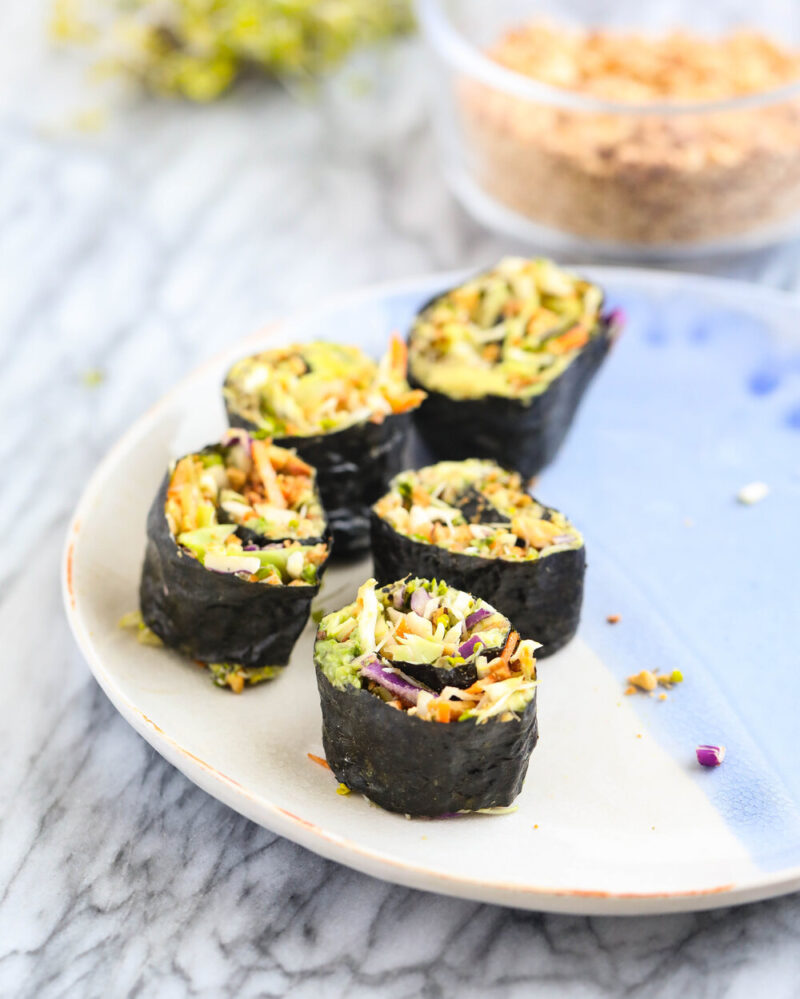You already know the extensive health benefits that can come from the sea, probably from some superfoods like salmon. But if you haven’t looked into sea vegetables as an insanely nutrient-rich vegetable option, you might be missing out. You may know them better as various forms of seaweed, and you’ve probably enjoyed them in your sushi already.
What are sea vegetables?
Typical types of sea vegetables, which are commonly eaten in Asian countries, include Nori, Wakame, Kombe, Kelp, Dulse, and others. While Western culture hasn’t fully integrated sea vegetables into the average diet, they are slowly gaining popularity. Even if you aren’t a sushi fan, there are other recipes that will help you integrate sea vegetables into your diet.
What do they look and taste like?
If you are picturing the water-logged algae you saw on your last trip to the beach (don’t eat that!), you’ll be pleased to know that sea vegetables that you eat aren’t usually in that same form. Instead, they are often dried, and can be sprinkled on various foods from salads to stews and soups. Many describe them as savory, and sometimes they are similar to cooked greens of various types. Red sea vegetables, such as Agar, is often sun-dried, and can be used in desserts and puddings as well as soups and salads. If you are still hesitant about the taste, consider integrating them into a smoothie instead.
Where do I buy them?
Health food stores are a good place to start, and even the organic/natural foods section of your local grocery will most likely have some form of dried seaweed. Amazon has a wide selection, from flakes you can sprinkle on foods, to full whole leaf pieces of kelp. Since they are now harvested in the United States more commonly, it’s easier to find and purchase them for an affordable price than before.
What are the health benefits of eating sea vegetables?
First, your thyroid will thank you. Seaweed commonly has higher amounts of iodine and tyrosine, both of which can enhance thyroid production. Your thyroid is responsible for things like weight control, metabolism, growth, reproduction, and other functions.
It’s like a vitamin from the ocean–sea vegetables often contain high amounts of many vitamins you’ll find in your daily multivitamin, including A, C, E, K, magnesium and zinc, folate, and more. While seaweed is also a source of vitamin B12, there’s some controversy amongst researchers in regards to how well it can be absorbed from seaweed in the human body.
Sea vegetables are also a great source of fiber and protein, which can make just your average leafy salad keep you full for much longer, assisting with weight and portion control.
How can I integrate them into my cooking?
-
Think of any time you’ve ever used a slaw (on a sandwich, as a side, etc.) and consider replacing it with wakame salad, a standard seaweed salad. Try it here on a shrimp sandwich.
-
Remember slim jims? Replace your jerky habit with a paleo-friendly veggie jim, which involves seeds, peppers, and spices wrapped in Nori seaweed sheets.
-
Crumbled nori can be sprinkled on chili, soups, and salads, but be advised it may add a bit more of a salty flavor to your recipes, so go easy on additional salt.
-
Replace your refined pasta for kelp noodles like in this recipe
-
Make a low carb wrap using Nori sheets instead









